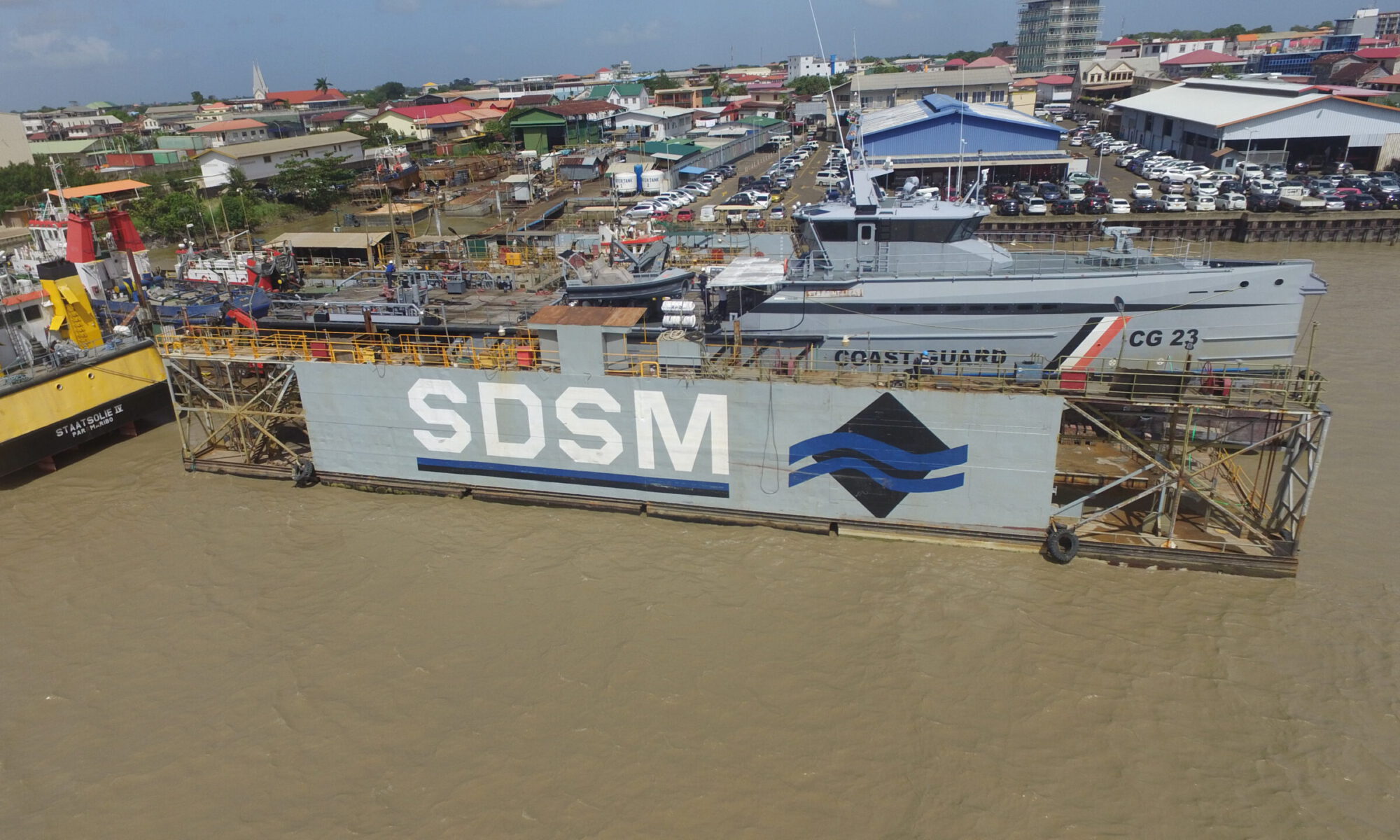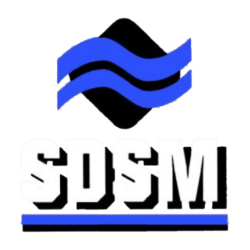Occupational Health & Safety Plan
The following subjects will give a quick overview of the improvements we make in the field of Occupational Health and Safety (OHS).
- Occupational Health and Safety Plan
- Occupational Health Safety Policy
- SDSM & Clients safety requirements
- Success factors for the OHS implementation
- Environmental Management
Introduction
In serving the local and regional market, we strive for top quality. In order to deliver top quality, safety is an indispensable aspect of its business operations. The management therefore has as policy objective of safety to be an integral part of its business operations. We will do everything in our power to ensure the safety of each project as well as continuously assess how to manage involved risks in order to deliver top quality.
1. Occupational Health Safety Plan
We want to improve our OHS performance further by conducting all our activities according safety procedures. That means we integrate safety in every (ship) repair and new building. It must become a second nature, a way of living.
SDSM & Occupational Health and Safety (OHS) Objective
At our current stage we have conducted a base line audit to identify the opportunity for improvements. We want to integrate OHS in our business operations. To achieve this, the OHS management system is being implemented based on the OHSAS 18001: 2007 requirements.
For the implementation thereof we made a transition plan.
TRANSITIONPLAN SDSM 2.0
Plan
Transformation strategy for SDSM 1.0 to SDSM 2.0
- Update the OHS policy & safety targets
- Conduct a risk assessment to identify safety and health risks within the company
- Conduct a plan of action to minimize or eliminate/mitigate the OHS risks
Do
- Write OHS manual for managing safety
- Updating the safety rule book based on output of the risks assessments
- Standard operating procedures (SOP) & Safe Work Instructions (SWI)
- Permits
- Job Hazard Analysis (JHA’s)
- Safe Work Plan
- Re-training/certifying employees for high risk activities
- Confined Space Entry
- Working at heights
- Sandblasting
- Compressed gas (Explosion hazards)
- Drowning
- Communication & consultation
- Safety & toolbox meetings with employees and clients
- Safety Committee
- Safety Induction
Check
- Conducting safety inspections & safety audit
- OHS inspections
- Emergency Drills
Act
- Internal Audit of the OHSAS 18001:2007 management system by a group of professional auditors
- Management review: Evaluate the results of the audit outcome with the top management
- Occupational Health Safety Policy
To show our commitment to Health and Safety the management has updated the OHS policy. The policy will be communicated to all stakeholders that safety is one of the top priorities in the company.
In support of realizing its policy goals, we have implemented a Safety Management System. This System is one of the basic elements for continuous improvement and securing of safety within SDSM.
The system supports the following:
- prevention of accidents and bad health conditions
- continuously improving of safety performances
- compliance with all applicable national legal laws and other requirements
- setting up a framework for the formulation and evaluation of safety objectives
- training the staff in how to deal with associated risks in their work environment
- monitoring all safety rules that must be followed by all employees, contractors and visitors entering the work site of SDSM N.V.
The policy is evaluated annually on basis of safety performances, so that it can be continuously tightened. The management ensures that the necessary measures are initiated to meet the above policy goals.
Furthermore, with this policy statement, the management issues a positive attitude, commitment and responsibility in managing safety and health risks within its operations.
3. SDSM & Clients safety requirements
To continually meet the safety requirements our company will implement a Safe Work Plan (SWP) process.
The process consists of the following steps:
- Identifying client safety requirements
- Conducting a Safe Work Plan (SWP) based on client requirements
- Submitting the Safe Work Plan to the client before conducting repair activities
- Communicating the Safe Work Plan through safety meetings and operation meetings
- Auditing the Safe Work Plan
- Implementing Corrective Actions and Preventive Actions (CAPA where required)
The SWP will have the following outline:
- Scope: repair activities
- Identified risk
- Safety and environmental requirements
- Plan of Actions & Execution (PA&E)
- Required procedures (OHS & Environmental)
- Employees qualification/certification
- Emergency Response Plan (ERP)
Before the repair activities start, the employees have toolbox meetings to discuss the risk they are going to face and how those risks can be eliminated or mitigated. This is done every morning prior to with the repair activities. Minutes of the meeting is kept for OHS visitation/inspection.
During the repair activities the OHS department will conduct safety inspections based on the SWP. The correct actions will be implemented at once in order to comply 100% with SDSM safety requirements.
When the activities are finished the OHS department shall evaluate the OHS performance.
4. Success factors
To successfully implement the OHS transition plan, we have to work on the following subjects:
- Creating the right safety culture
- Management team showing their safety commitment by participating in inspections and committing itself to eliminate or minimize OHS risks
- Encourage workers participation in Health and Safety (Safety Committee)
- Giving the required safety training per job
- Creating the right work attitude for example: production is not above safety/safety is a integrated part of production
- Continuously improving the safety awareness of the employees
Our management is aware that with the right mindset, effort and commitment they are able to succeed in a safer SDSM for all her stakeholders.
- Environmental Management requirements
5.1. REGULATION ON DRYDOCKING AREAS
- Drydocking activity
Drydocking activity is not without consequence for the environment and mainly generates:
- Pollution by packaging waste from the products used (macro-waste)
For this purpose, we placed at the dry dock area three waste containers which have three different colors, for waste segregation. These waste containers will all be labelled in both English and in Dutch to indicate the type of waste that supposed to be disposed in each one.
For example:
1. (Green waste container) for domestic/organic waste
2. (Red waste container) for plastic waste and plastic bottles
3. (Yellow waste container) hazardous waste
These containers all have a lid that cannot be opened easily by the wind, such to prevent the content from escaping and entering the river. When they are full, they will be carried out by a local waste collector and disposed according to the Surinamese regulation. On return to the dock, they will be washed and make available for use again.
- Air pollution caused by dust from sanding
Grit will be used for blasting purposes.
- The pollution of water by the different chemical molecules contained in the products used
The waters of the fairing, loaded with paint debris, flow towards the natural environment both during the refit work and during the leaching of the grounds by the rainwater.
Our Mitigation measure will be aggressive housekeeping. A team is appointed to broom the dock surface and undo it of residues and dirt. The accumulated residues will be collected in bins and again a local waste collector will take it from site and disposed according to Surinamese regulation.
- The visual and sound impacts
Depending on the frequency of the drydocking, the visual and sound impacts related to the technical area may be significant. SDSM minimized both the visual as well as the sound impacts for nearby households.
- REGULATION CONTEXT ON DRYDOCKING AREAS
- French national regulations
There is now a real desire to reduce these emissions in the natural environment. This will be reflected in particular in the water pollution legislation (Water Act No. 92-3 of 3 January 1992) applicable to the fairing areas. Furthermore, altering the quality of sediments by depositing certain contaminants contained in antifouling paints can generate significant additional costs during harbor dredging operations.
The application of Section 6 of the Environment Code and Article L 216-6, which states: “Disposal, discharge or discharge into surface, underground or sea water in The boundary of territorial waters, directly or indirectly, any substance or substances the action or reactions of which, even temporarily, results in detrimental effects on health or damage to flora or fauna, or significant changes in the regime Normal water supply or limitations on the use of bathing areas, shall be punished by two years’ imprisonment and a fine of 75,000 euros”.
It is therefore prohibited to carry out any cowling operation resulting in the dumping of refuse residues directly into the natural environment. The fairing on hold is therefore not allowed.
Dumping of residues in the Surinamese river is a “no go” at SDSM. Due to the tide table, residues floats up- and down river stream. From time to time these residues get stuck at the docks and jetty area. We undo these areas from these residues to make sure we proceed with our job in a clean Environment.
- European strengthening
Directive 2000/59 / EC of the European Parliament and of the Council of 27 November 2000 on port reception facilities for ship-generated waste and cargo residues aims to reduce emissions of polluting substances Of the marine environment. It considers as “operational waste” all waste, including waste water and residues other than cargo residues, produced during the operation of a ship. The residues resulting from the fairing operations are therefore subject to this directive.
Solid waste will be taken care of as indicated at 1.4.1. For waste water we will use an enclose tank to collect all such and disposed according to the Surinamese regulation.
- Implications for managers
Possibility of management of the water of fairing:
- Pre-treatment before discharge into the port basin. It is based mainly on:
- a screening
- decantation to separate heavy particles and hydrocarbons
- Transport to a sanitation system if its capacities are compatible with the activity of the port
The importance of the consequences of sediment contamination for the management of a port underscores the need to pay particular attention to the recovery and treatment of fairing waters.
The treatment of 5.2.2. will be equal as 5.2.3.

